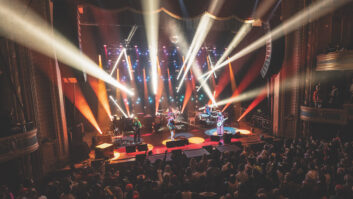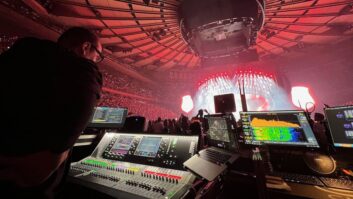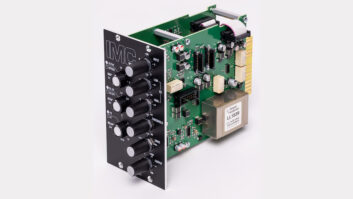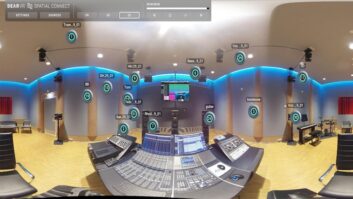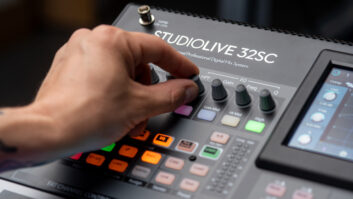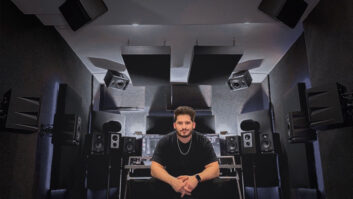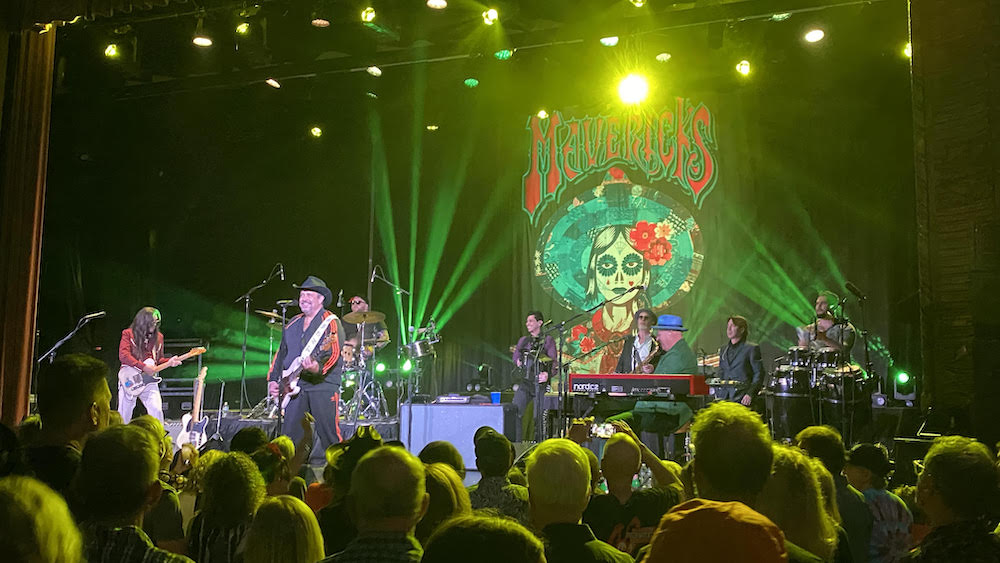
Sleepy Hollow, NY (December 7, 2023)—Once upon a time—say, back in the Nineties when they started out—The Mavericks were a country band, but these days, catch a show and you’ll also hear plenty of Tex-Mex, Western Swing, Tejano, Americana, straight-up Rock and whatever else they feel like playing that’ll rip the roof off the joint.
Case in point: A Halloween weekend show at the Tarrytown Music Hall next to Sleepy Hollow, NY saw the band kick things off by teasing the opening roar of Black Sabbath’s “Iron Man.” Later on, The 5th Dimension’s “Let The Sunshine In” and Roger Miller’s “King of the Road” snuck into the set, slotting in comfortably next to songs from the Grammy-winning group’s own dozen albums. A finely tuned touring machine that plays more than 100 shows a year, today The Mavericks use their genre-hopping, turn-on-a-dime musicianship and singer Raul Malo’s charismatic, Orbison-esque voice to turn each concert into a raucous party.
The off-the-cuff covers are all in a night’s work, and no two shows are the same, says production manager/FOH engineer Allan Casillas: “Raul has a big repertoire of songs that he just throws at the band, they catch ’em and that makes it fun for everybody.” Casillas would know, having worked with the group since 2014 when he joined their team as a monitor engineer. Hundreds of shows later, the Full Sail graduate can tell what song’s coming next just by reading Malo’s body language on stage. “A little twist, a little head movement, and I know,” he grins. “I’m ready for the audibles—or I know I can catch them, at least.”
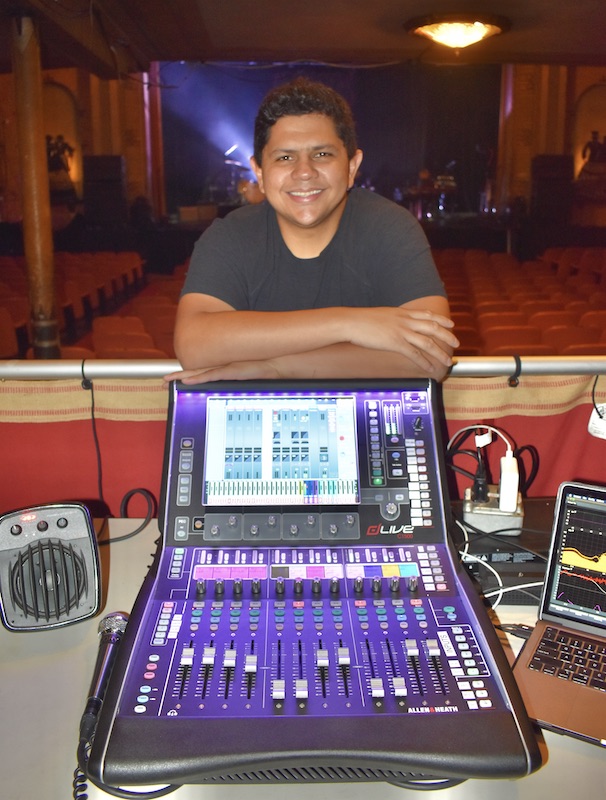
When the band breaks into any of the 300 songs in Malo’s group and solo catalogs, Casillas is right on it, mixing the eight musicians on-stage—the four Mavericks backed by horn players and multi-instrumentalists—on an Allen & Heath dLive C1500 control surface. “It handles 128 channels in and out, and has all sorts of IO,” he explains. “I use Waves cards behind this to run multitrack recording, Smaart software and playback like Spotify. There’s an option card for essentially anything you want to do; whether it’s Dante, Waves, MADI, there’s a card for it.”
While the console’s capabilities are crucial, there’s another reason why The Mavericks bought their own C1500s to outfit the FOH and monitor positions: the desk’s diminutive size: “We’re able to fly with them—we go to Europe, fly here and there, and these are perfect to take with us and get that consistency. They’re overweight luggage, but they can go on a plane; in its case with no cables, it’s 69 pounds, so it’s under the 70-lbs limit.”
Casillas originally planned to add a plug-in server to his FOH setup, but ultimately changed his mind, opting to use on-board effects instead: “I have some tube-modeling preamps that I can add, and a primary source expander, which is like a gate for vocals—it lets me have a little more gain before feedback. It works great, especially on smaller stages where the vocal mic is really close to the P.A. I also wanted some nice compression and I have it with their version of a LA-2A—I love that compressor on Raul’s vocal. There’s also a great SSL-style compressor, and on my outputs, there’s a 10-band parametric EQ right there. It was weird to realize that while maybe I wanted a server, the console had pretty much what I wanted and I didn’t really need it.”
Given the band’s vast repertoire and the dynamic nature of its performances—quiet and intimate one moment, a musical free-for-all the next—Casillas doesn’t use snapshots, opting to mix freehand instead, particularly since the production uses local racks and stacks at every stop. “We source gear that is proper to the show, and I follow a frequency response curve on Smaart where if I am able to get it close enough to that, I can have a consistent mix throughout every room,” he explained. “I still try to keep everything manual [because] the frequency response, it’s not perfect, so small changes might sound a little more drastic when a P.A. is either really good or really bad. I would much rather keep my fingers on faders and figure it out for the best.”
After hundreds of shows with the band, he knows which loudspeakers work to The Mavericks’ advantage. “L-Acoustic will always be my first choice,” he laughs. “It’s a cheater’s box—anybody can mix on those and they’re gonna sound good; it’s a confirmed thing. But d&b, Meyer, Adamson, JBL? They’re all good systems. Really, I find it matters more that you have a good systems engineer who knows how to tune his system.”
Up at stageside, monitor engineer Angela Sobolewski mixes on the other dLive C1500. A graduate of Nashville’s Blackbird Academy live sound program, she sends mixes to the musicians’ in-ear systems, all based around Sennheiser G4 wireless packs feeding ear monitors from Canada’s Plunge Audio. The one exception is Malo, who prefers to use wedges to get a read on his vocals.
Thomas Rhett Tour Has A ‘Home Team’ Advantage
That vocal is one of the band’s biggest draws and it’s kept front and center at all times. “I always have my lead vocal on a fader, like a regular human being should,” joked Casillas. “When I first started with the guys, Raul was using a Shure 58, and it was a perfect match for his very deep tone. I tried other mics with success, but there was something about the 58 that made us want to go back to it— and then the KSM8 came out in 2016. It’s a dual diaphragm that manages the proximity effect, so all those low notes where he gets close to the mic are very soothing, not muffled. It’s the perfect solution for his voice, so we’ve had the KSM8 on him and all the background vocals since then.”
Elsewhere on stage, roaring guitar amps are locked away inside iso cabinets during the show, and Shure KSM137 small diaphragm condenser mics can be found around the drum kit, bongos and most of the percussion. “I wanted some more flavor and snap on the congas, which is now important,” says Casillas. “It wasn’t before—we did without congas for a while, but we reintroduced them to the music and I miss them when they’re not there! I put a Beta 98 condenser mic on them and they’re more present now.”
The relatively quiet stage and clean miking help Casillas make the most of the band’s dynamic approach, creating showstopping moments built around Malo’s soaring, reverb-drenched voice: “On slow songs. I bring my SPL level all the way down to 75 or 80 dB. It’s low low low—but everyone is on the edge of their seat listening! You catch them shushing everybody else because everything is so subtle, so quiet, so intimate and close to them. The next song hits: Boom, we’re back! We kick them right in the butt with something else right away and it’s like ‘Oh yeah, we’re at a show!’”
Those moments work best when the crowd and band are locked in with each other from the first note, but sometimes building that connection takes some matchmaking. “I used to say, ‘Oh, I run my show at 100 dB,’ but it varies,” says Casillas. “If the crowd’s not doing anything, 100 dB is too loud. If the guys are giving up so much energy and it’s not being matched, I bring it down to the crowd and just be with them, and then bring the show up as they get into it. When that loop of energy happens, that’s the sweet spot; that’s where you want to be every show!”

